Street food stories: Sicily
Arancini or arancine? 🤔 🌋 🍊
Hungry with Ideas is a free email newsletter about food and travel. This post is part of a series about street food around the world. Check out the previous post about Thailand and drop your email below to get the next one straight to your inbox.
I’m convinced that Italy’s biggest source of soft power is food. In 2024, its passport ranked second most powerful, ahead of Singapore, Sweden, and Japan. I mean, who would turn down diplomatic alliances with the birthplace of pizza?
While pizza and pasta have conquered hearts around the globe, Italian cuisine is far more diverse than it’s given credit for abroad. With nearly 5,000 miles (8,000 kilometers) of coastline, seafood plays a big role in many regions, while in Tuscany, meat is king. In Florence, for example, you’ll find traditional food carts serving up lampredotto – chopped cow stomach on a thick roll. Chewy!
Of all my time spent in various regions of Italy, I think Sicily has the strongest street food culture. Historically, it makes sense. Americans say that Italy is shaped like a boot, but I recently learned that Italians call it a boot kicking a soccer ball (ahem, football, let’s all calm down!) Sicily is the ball floating in the Mediterranean only 200 nautical miles from Tunisia.
Because of its strategic position, Sicily was occupied during various periods by the Greeks, Romans, Arabs, Germanic tribes, the Spanish, French Normans, and Vikings – and that’s an abbreviated list! Each conqueror left a unique mark on the culture of the island. The French cemented Catholicism as Sicily’s primary religion, while under Spanish rule, the architectural style now known as Sicilian Baroque took hold.
While Arab rulers tried to exert longstanding influence in a number of ways, food is predominately where they succeeded. It’s no coincidence that centuries later, Palermo still boasts some of Europe’s most bustling markets. A walk through the maze of tents and tables is a feast for the senses. Vendors call out their goods in an effort to help you decide where to spend your money. Between plump fruits and vegetables, fresh seafood, fried snacks, and decadent sweets, it’s a tough choice.
Like me, you might be tempted to go for distinctly Sicilian products like lemons, oranges, apricots, eggplants, pomegranates, and pistachios. After all, from pasta alla Norma to lemon granita, you’ll find these ingredients in some shape or form on virtually every restaurant menu or bakery counter on the island. Yet all of these items were imported to Sicily during the period of Arab rule, circa 830 to 1091.
Even the “queen of Sicilian street food” is a transplant. Arancine (derived from arancia, or orange, given the shape and size) are stuffed rice balls that usually contain one of two fillings: meat ragù or ham and bechamel (a recipe known as al burro). It was the Arabs who first brought rice to Sicily along with recipes that could be made with it.
“The arancina originated from an idea of the Arabs in North Africa,” Danilo Li Muli told me. “The idea was to transport the filling on a trip to the desert. So the mutton and vegetables were placed inside fried rice, making it transportable.”
I met Danilo and his wife Eva Polanska when I visited Sicily for the first time in 2022 while on assignment for Eater. The couple runs Ke Palle: Arancine d'Autore (literally: what balls!), a shop in the heart of Palermo that only does one thing and does it very well.
While you can find arancine nearly everywhere in Palermo, Ke Palle is worth visiting for two reasons: First, the product is made fresh daily and fried in small batches throughout the day. I ate plenty of soggy arancine in Palermo which had been fried in the morning and quickly microwaved to order later in the day. At Ke Palle, hot and crispy is the guarantee.
What really differentiates Ke Palle from other arancine vendors, however, is the shop’s offering of 20-30 recipes ranging from seafood flavors, to chicken curry, porcini mushrooms, alla Norma, and even sweet arancine filled with melty Nutella or pistachio cream. They’ve also experimented with cooking methods to create a version that’s baked instead of deep fried and another that’s open on top so it can be stuffed with copious amounts of mozzarella and mortadella before being showered with crushed pistachios.
Danilo likens the couple’s vision for arancine to that of gelato. You’d be hard-pressed to find an ice cream shop that only offers two classic flavors – so why should arancine fillings be limited to ragù and al burro?
And since arancine is such a cheap, versatile, and accessible street food, Danilo and Eva believe everyone should be able to try it regardless of dietary restrictions and preferences.
Their chef, Giuseppe Di Forti, gave me an inside look at the magic in the Ke Palle kitchen. You can watch the whole process from cooking the rice and fillings, to forming the balls by hand, to coating and deep-frying them to crispy perfection in my video below. Warning: it will make you hungry!
Now you might be thinking, “I always called this food arancini!” And that’s where things start to get serious. As I discovered, the naming convention of fried rice balls is a hotly debated topic in Sicily.
The Palermitani form their fried rice balls into perfectly round, orange-sized circles, from which comes the feminine word “arancina” and the plural form “arancine.”
Meanwhile, in Sicily’s second-largest city, Catania, the form is triangular to represent the shape of nearby Mount Etna, the active volcano that looms over the city. Since they are no longer shaped like oranges, the masculine words “arancino” and “arancini” are used.
If you are ever traveling in Sicily – even if you do not speak Italian – you must take great pains to get this right. Otherwise, you will likely offend someone and be sternly corrected.
Take it from me. During our interview, I asked Danilo a question about “Ke Palle’s arancini.” The smile slipped from his face.
“We don’t sell arancini,” he said firmly, before adding some remark about the “Catania-nization'' of the word.
Like I said, this is serious. Just look at Ke Palle’s 2017 poster for International Women’s Day: L’arancina è fimmina! The arancina is female!
I’ll let the Palermitani have this one: The arancinA is the queen of Sicilian street food. She’s even got her own festival – Palermitani traditionally gorge themselves on arancine for Saint Lucy’s Day on December 13.
But the arancina isn’t the only royalty on the island. There’s also a king of Sicilian street food and he’s a local through-and-through. In Part 2 of Street Food Stories: Sicily, we’ll leave Palermo and travel inland to the mountain village of Piana degli Albanesi, where fresh sheep’s milk ricotta becomes the deliciously rich filling for the crunchy pastry tubes known as cannoli. See you soon!
Subscribe below to get the next installment of my street food series directly in your inbox. In the meantime, check out the first post about Thailand.



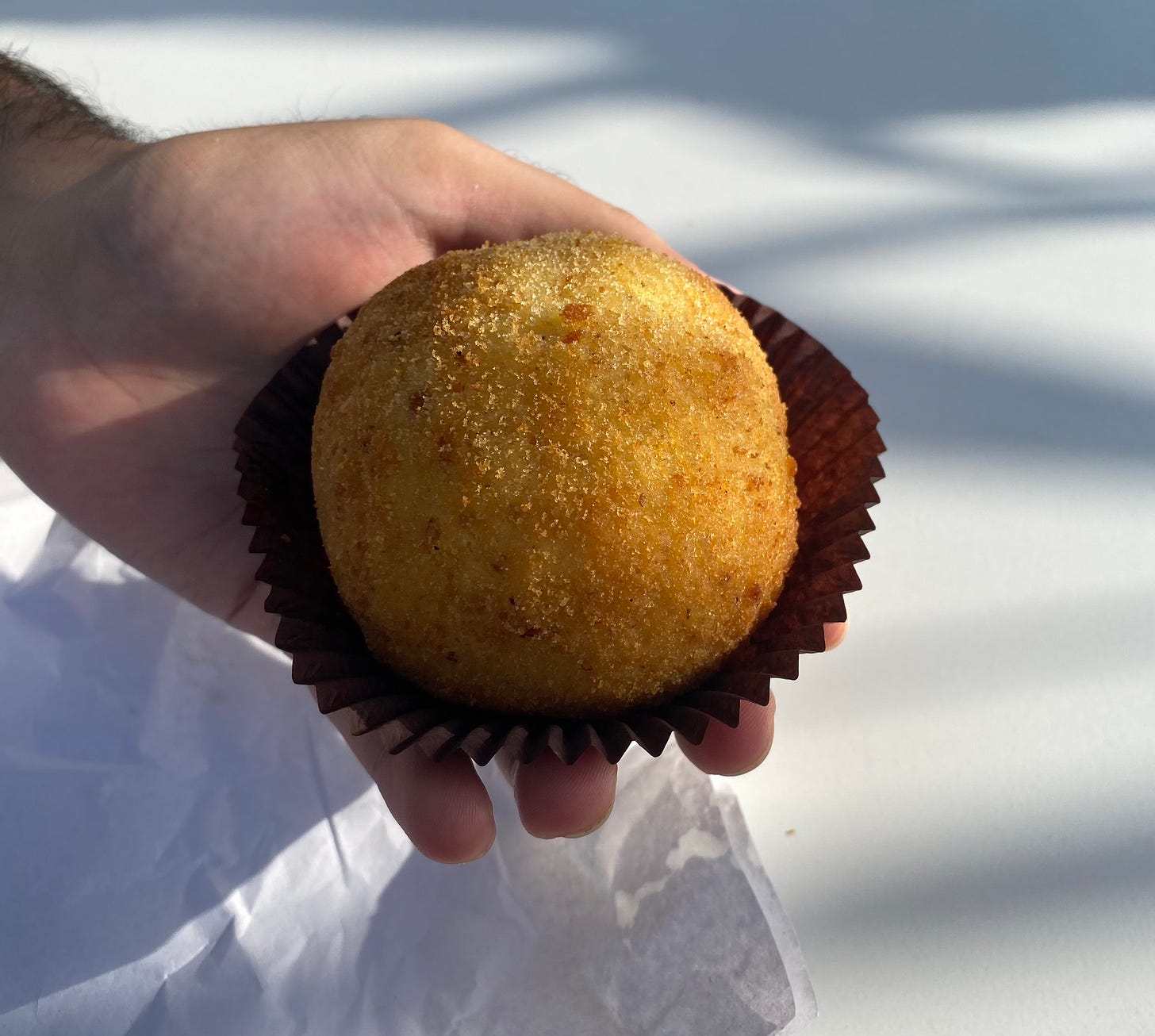
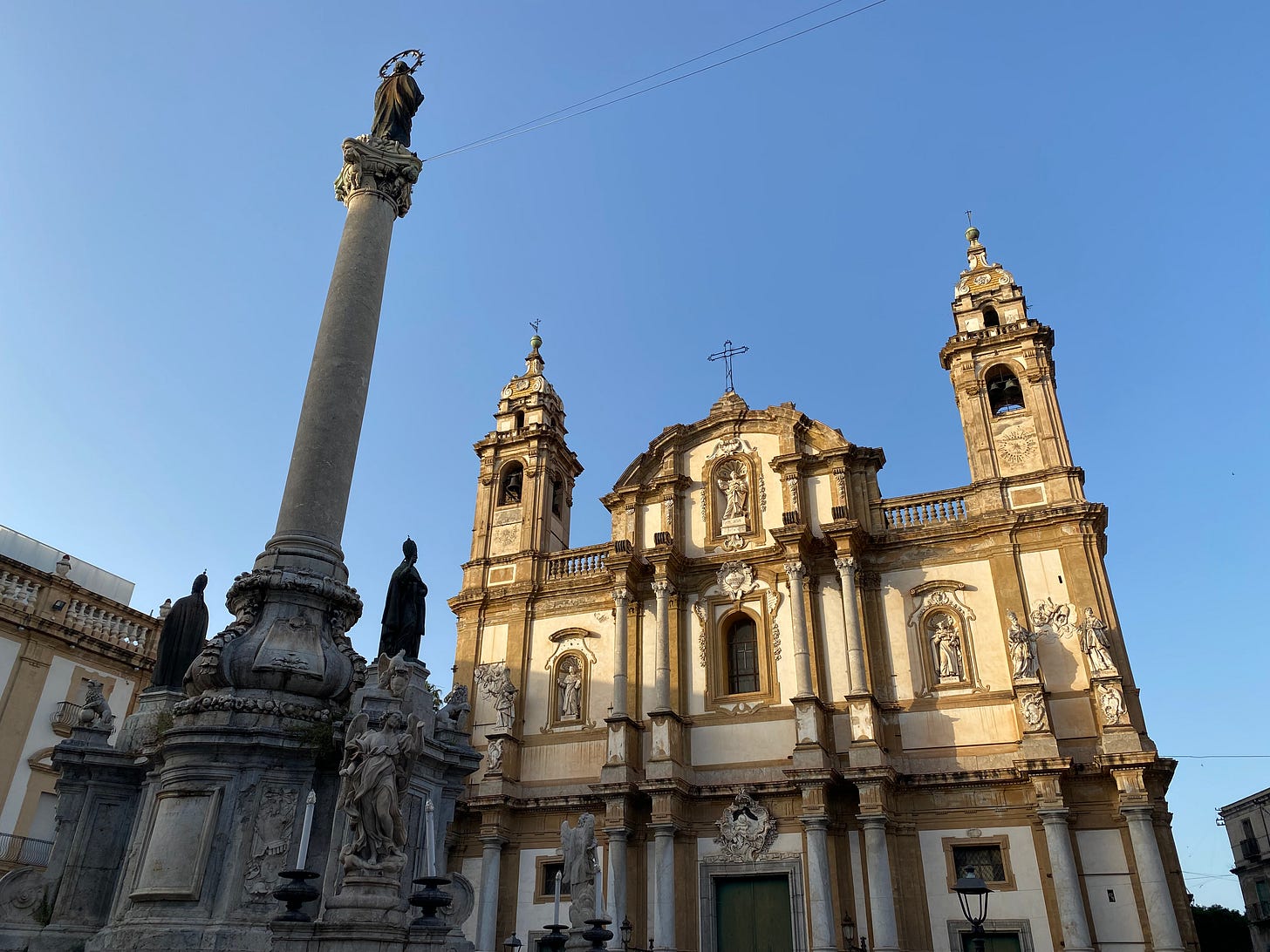
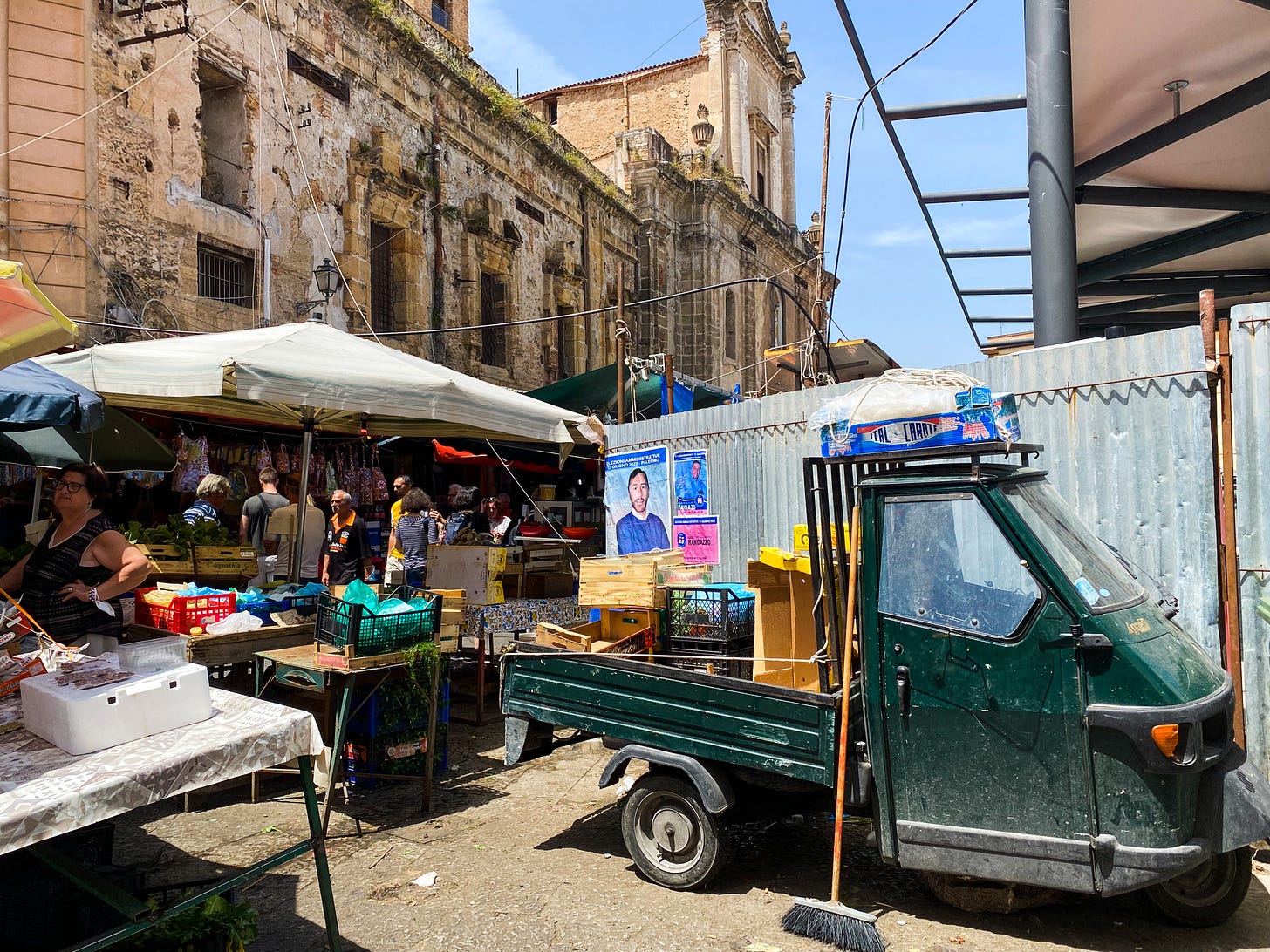
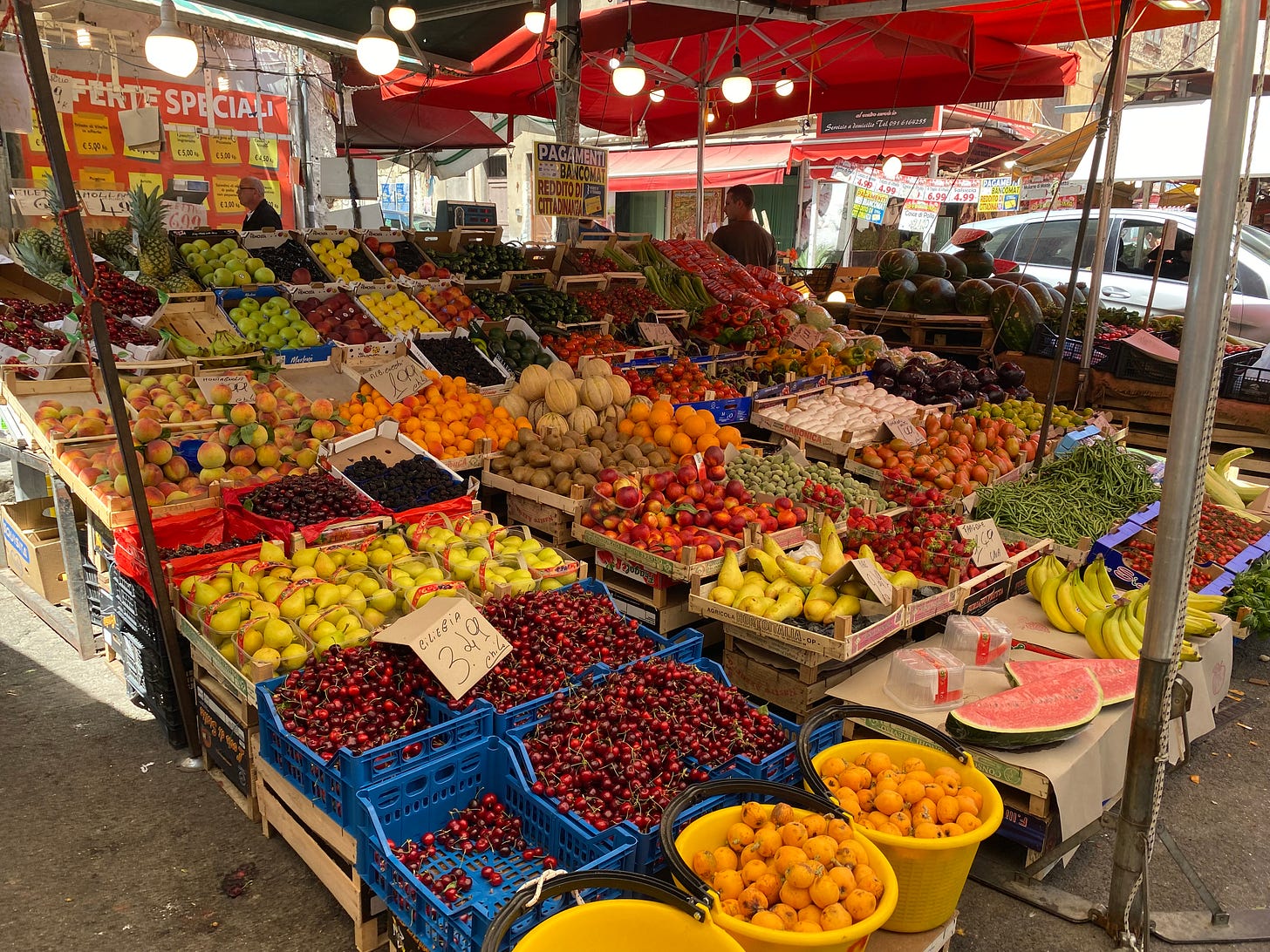
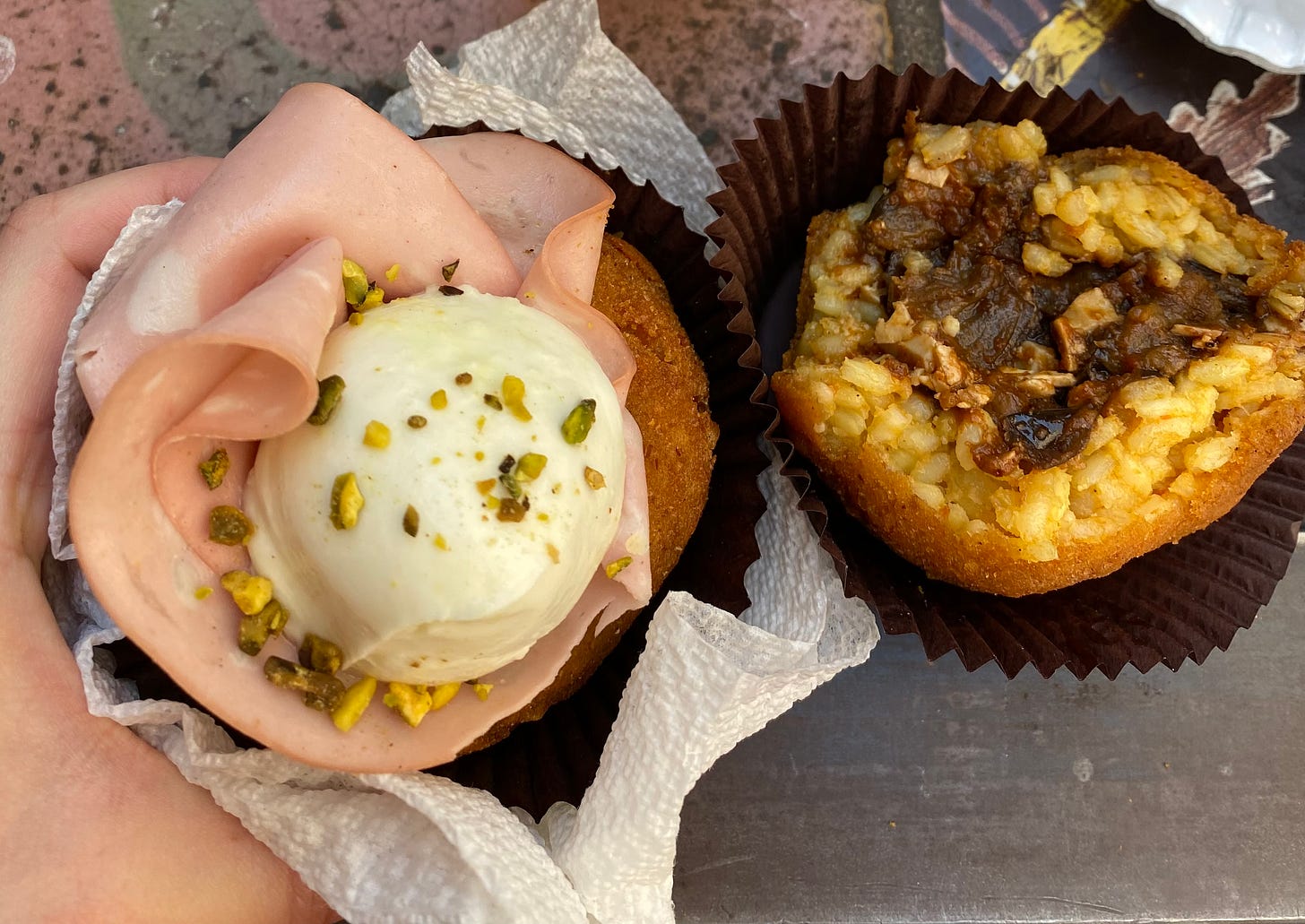
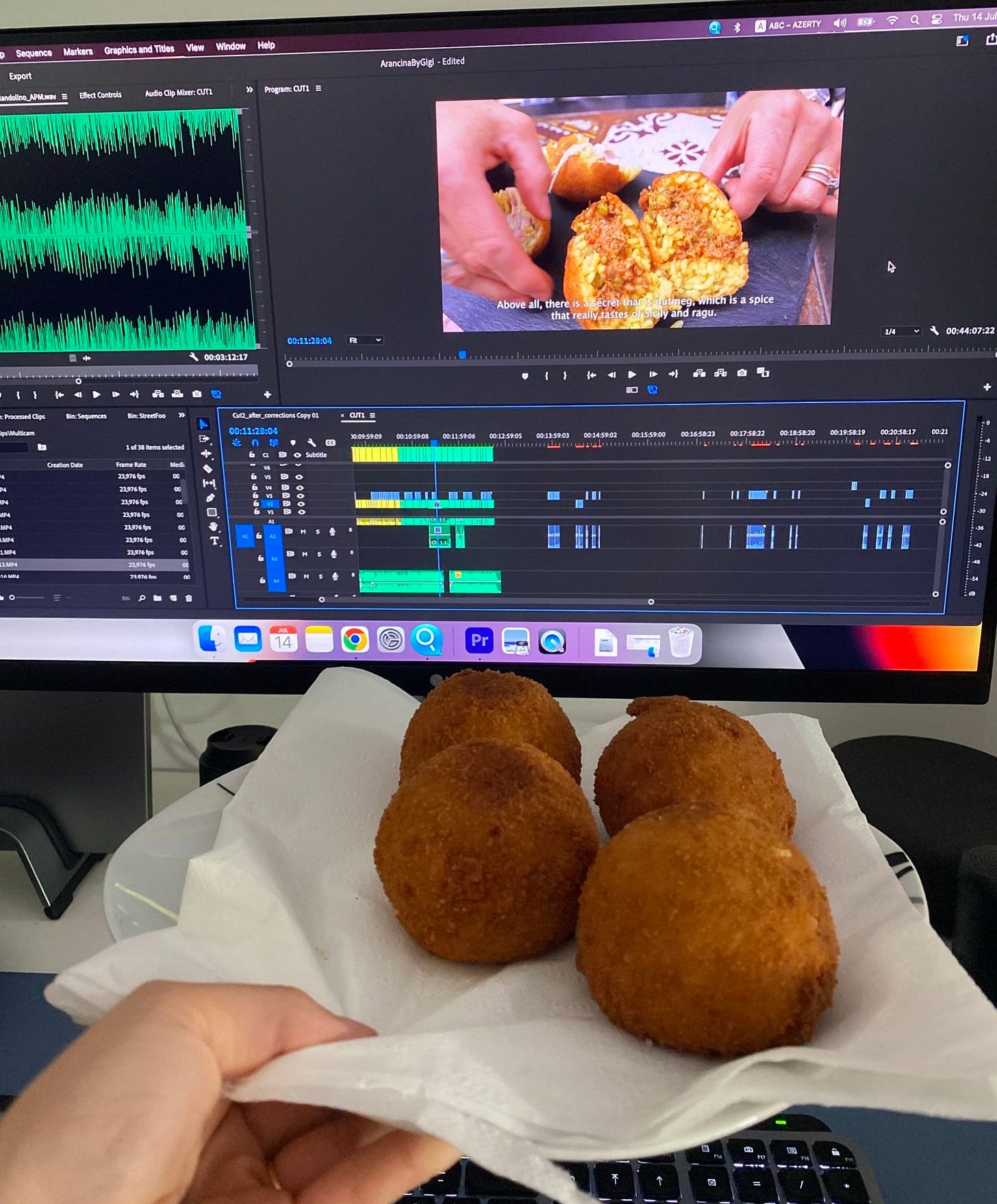
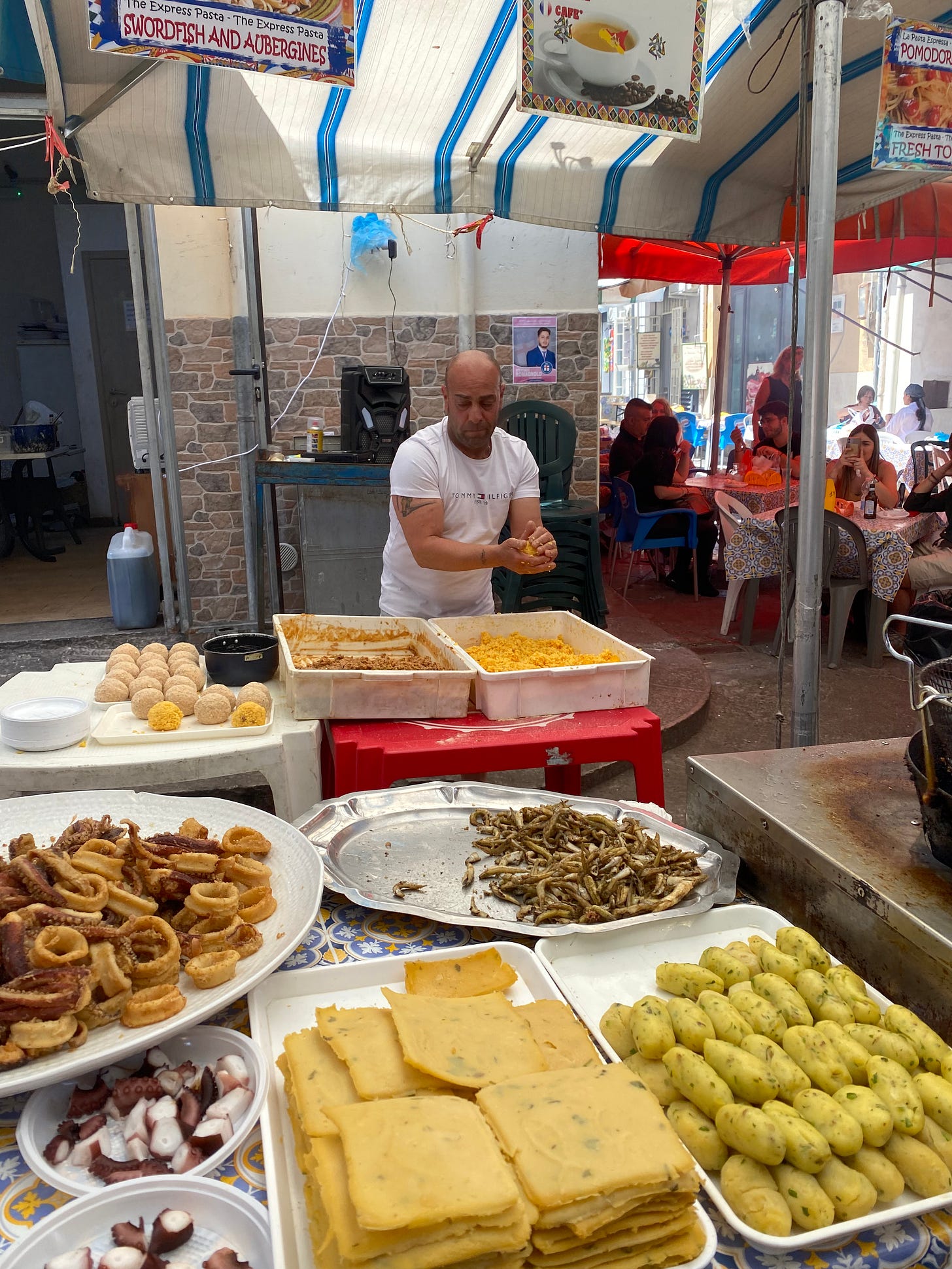
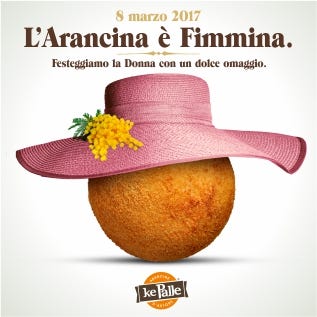
This is terrific and very timely as we are going to Sicily next month for almost 2 weeks. Your piece was a great intro. We will definitely check out the arancina at Ke Palle and will endeavor to keep our gendered food references correct!
Really interesting! I have just started reading Delizia by John Dickie, the second chapter is about Palermo's food history, I hadn't realised that the Arabs had such a big influence on the food culture there. Definitely putting Sicily on the foodie travel list!